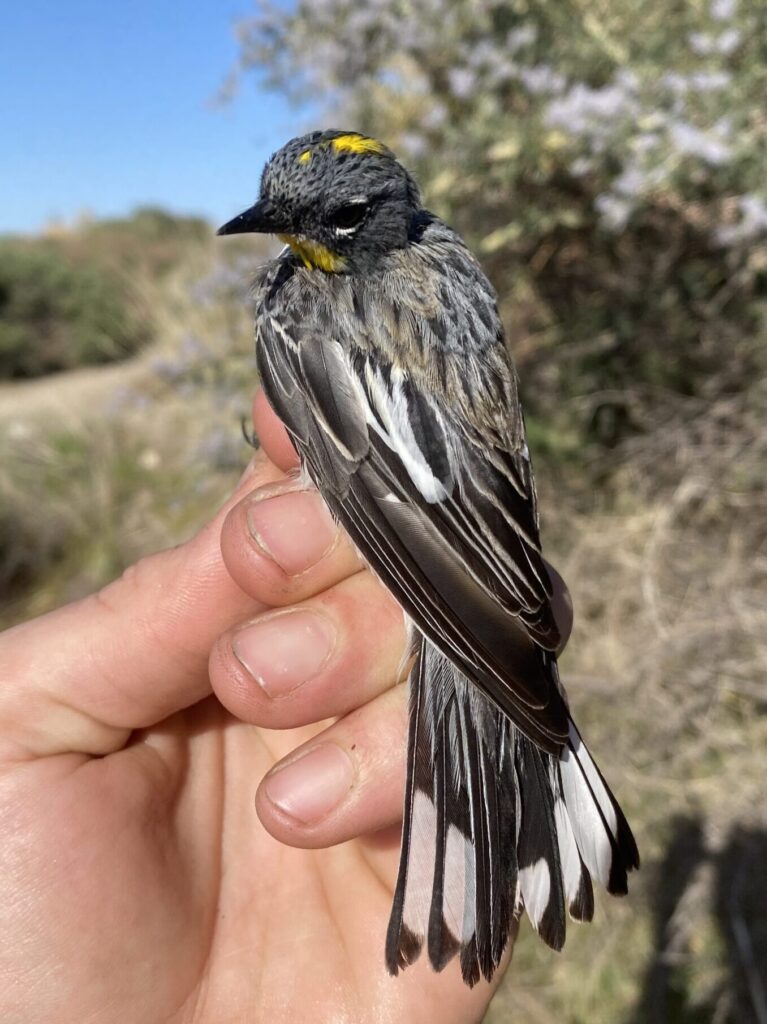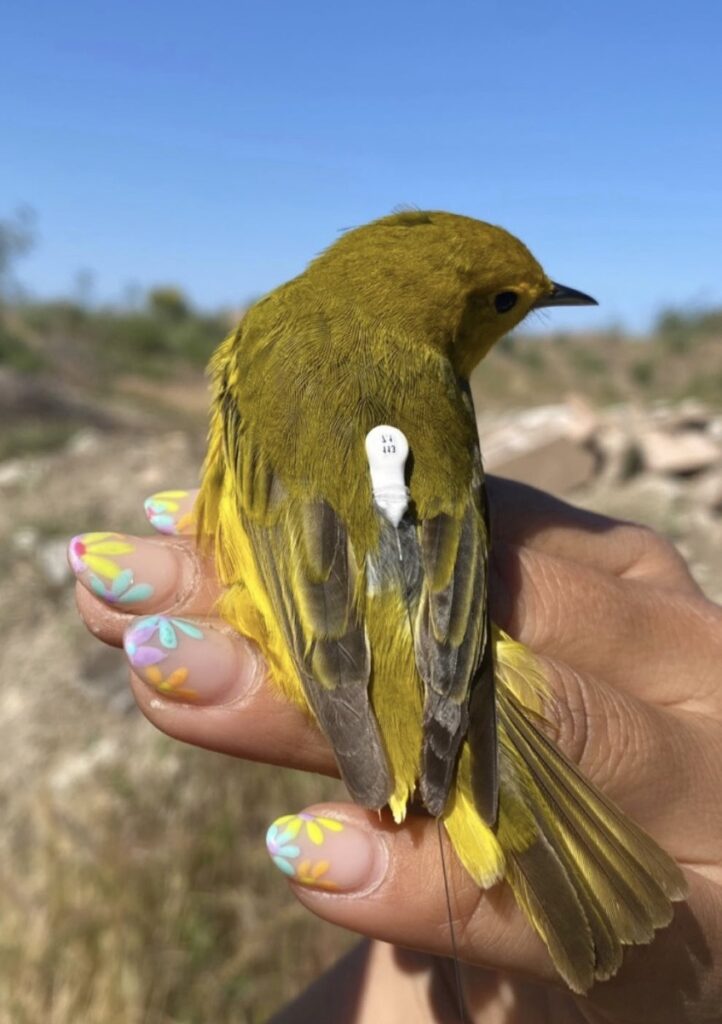
Reports and Publications
“Bear Divide Banding Station: A New Location for Capturing Dawn Migrants of the West“
https://easternbirdbanding.org/wp-content/uploads/2022/02/NABB_46-1-2_50-51.pdf
“Avian monitoring results for two years of study at a newly recognized spring migration concentration point in the Angeles National Forest, Los Angeles County, California“
https://easternbirdbanding.org/wp-content/uploads/2023/06/9-18.pdf
“A Novel Locality for the Observation of Thousands of Passerine Birds During Spring Migration in Los Angeles County, California”
https://archive.westernfieldornithologists.org/archive/V52/52(4)-p322-p329.pdf
Webinars and Presentations
Bear Divide Banding Station
Presented at the 2021 Western Bird Banding Association (WBBA) Conference
https://www.facebook.com/Westernbirdbandng/videos/1124273524721636/


Collaborative Projects
Feather Sampling for the Bird Genoscape Project
Each season, the Bear Divide Banding Station contributes hundreds of feather samples to the Bird Genoscape Project based at Colorado State University. Two rectrices (tail feathers) are collected for genetic analysis where DNA is extracted from tissues present in the feather calamus (quill). These samples are used to expand the avian genetic bank of the Bird Genoscape Project to map distinct genetic populations and determine specific migratory pathways across the Western Hemisphere.
Population Structure of Wilson’s and Yellow Warblers
Lauren Hill (banding station co-founder) is a M.S. Environmental Biology graduate student in Dr. Eric Wood’s Urban and Avian Ecology lab at Cal State Los Angeles. She is working with the Bird Genoscape Project out of Colorado State University to build upon existing genoscapes for two long-distance migratory bird species, the Wilson’s Warbler and Yellow Warbler that pass through Bear Divide. Using high-resolution genetic markers from DNA extracted from feather samples, she is examining migratory population structure along the Pacific Flyway with a focus on understanding the linkages between Bear Divide as a migratory corridor and probable final breeding destinations for both migrant species. Utilizing four years of combined bird banding data and DNA extracted from tail feather samples collected from spring migratory seasons at Bear Divide between 2021 and 2024, she is 1) examining the genetic population structure of Wilson’s and Yellow warblers at Bear Divide by identifying the probable breeding origins of sub-populations, 2) determining differences in timing of passage between sub-populations, and 3) identifying differences in migratory body condition and morphometrics of sub-populations.


Blood Sampling
Dr. Kristen M. Covino from the Department of Biology at Loyola Marymount University is collecting blood samples from three target migrant species utilizing Bear Divide: Audubon’s Warblers, Swainson’s Thrushes, and Gambel’s White-crowned Sparrows. The goal of the study is to examine hormonal trends in migratory birds, specifically how testosterone levels fluctuate throughout migration.
MOTUS Wildlife Tracking
In the winter of 2022, a Movement Wildlife Tracking System Motus tower was installed at the Bear Divide Fire Station by the Pasadena Audubon Society. Motus is an international collaborative network of researchers that uses automated radio telemetry to simultaneously track hundreds of individuals of numerous species of birds, bats, and insects over vast distances. This installation at Bear Divide provided a new opportunity to study western avian migration and population ecology through the deployment of radio telemetry tags.
In 2023, banding station co-founder and 2024 M.S. Biology graduate from California State University Los Angeles, Tania Romero deployed six Motus Wildlife Tracking System nanotags on Yellow Warblers as part of a pilot study to examine climate impacts on migratory bird movement along the Pacific Flyway. Two Yellow Warblers that were fitted with Lotek Nanotags at Bear Divide were successfully detected in Vancouver, Canada 15 days after tag deployment. One bird was detected in Llano Seco, California 9 days after tag deployment at Bear Divide and was then detected in Vancouver, Canada 6 days later. This demonstrates how Motus can provide insight into potential migratory pathways.


Fecal Sampling
In partnership with Dr. Eric M. Wood’s Avian Ecology Lab at California State University Los Angeles, fecal samples are collected from Wilson’s Warblers to study avian diet and gut microbiome trends during migration.
Songbirds as Pollinators (SaP)
In partnership with the Songbirds as Pollinators Project at Colorado State University led by PhD student Carolyn Coyle, pollen swabs were collected between Spring 2023-2024 from selected target species composed of hummingbirds, warblers, tanagers, vireos, and orioles. This project documents flower foraging behavior and makes inferences of bird and plant relationships.


